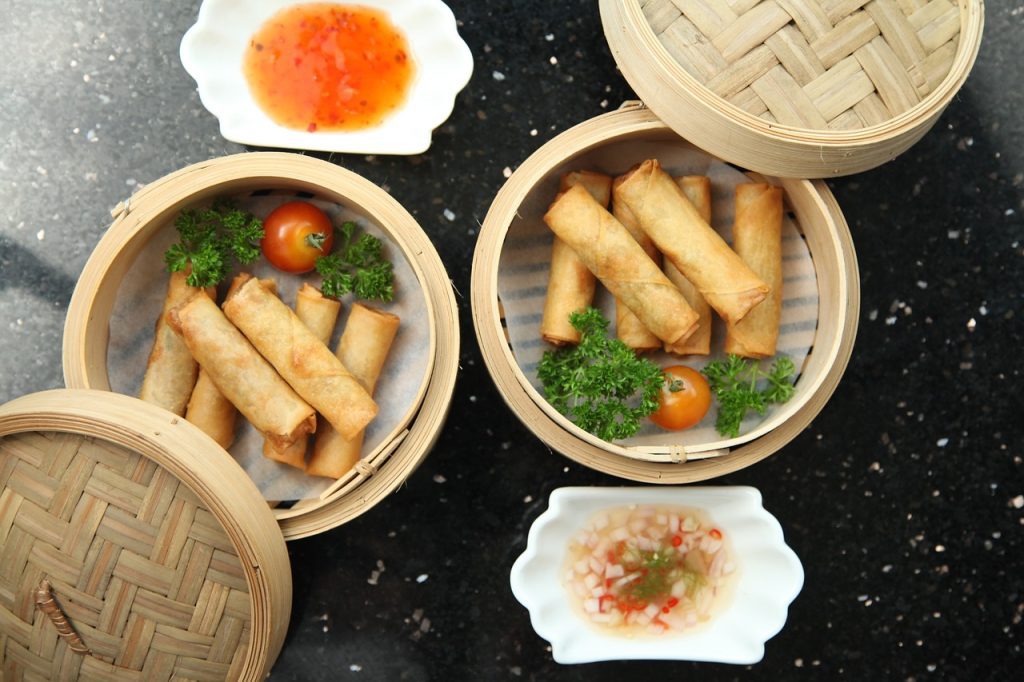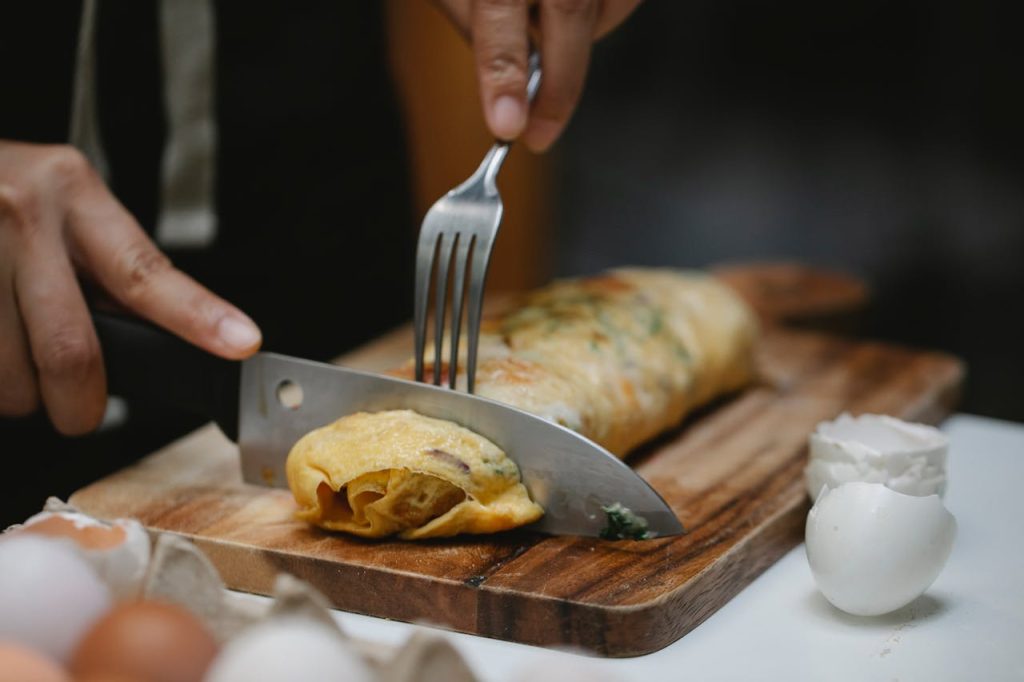Discover the key differences between Spring Roll vs. Egg Roll from ingredients to cooking methods. Explore their flavors, textures, and nutritional value in this detailed comparison.
In general, spring rolls are made from thin, translucent wrappers, which could be rice or wheat flour-based; they are usually filled with fresh vegetables, perhaps some meat, and most commonly served fresh and lightly fried.
Egg rolls usually come with the thicker and crunchier wrapper made from wheat. Then packed with cabbage, pork, and other vegetables, egg rolls are deep-fried. Deep-fried egg rolls are crunchier if compared to much lighter spring rolls that are less oily.
Origin and History
Spring rolls are thought to have originated in China during the Jin Dynasty, AD 265-420. In ancient times, they were eaten only during the Spring Festival, hence their name. They borrowed their name from the fact that they were originally eaten as a treat at the Spring Festival and as they traveled from country to country through Asia, such as Vietnam and Thailand, they picked up their particular flavor.
The egg roll is an importation of Chinese-American fare. There are no unquestionable verifications of its origins; egg rolls are said to have become famous in the early1900s, particularly thanks to Chinese-American restaurants. They differ greatly from Chinese spring rolls, as egg rolls have taken on a thicker and crunchier wrap created to suit Western tastes.
Spring Roll vs. Egg Roll
1. Origins and Cultural Background
Spring Rolls
Spring rolls originated in China as food for the spring festival, which essentially indicates the idea of a new beginning. And then variations of spring rolls got spread to other parts of Asia, such as Vietnam, Thailand, and others, where each region added its unique twist that resulted in fresh spring rolls (uncooked) and fried forms being enjoyed as light snacks or appetizers with a different presentation.

Egg Rolls
The egg roll is believed to be an American-Chinese invention that dates back to early 20th century America. Chinese recipes provided inspiration for egg rolls well into the American-Chinese culinary tradition; today, they can be found in many of the takeout restaurants operating in the United States. Outside of the spring roll, these American-made egg rolls cannot be found in traditional Chinese recipes anywhere else in the world.
2. Wrapper Differences
Spring Rolls
Spring rolls are wrapped with thin translucent wrappers which are usually made from rice flour or wheat flour. Once fried, the wrapper turns light crispy and flaky. Fresh spring rolls usually contain rice paper which remains soft and and chewy. The thinness of the wrappers allows the fillings to shine without dominating the dish.
Egg Rolls
Egg rolls traditionally have a thicker, denser consistency than regular wrappers, made from wheat flour and eggs. Hence, their richer flavors and chewier character add to the dish’s appetizing quality.
Quite a contrast from the already delicious savory filling, this deep-fried wrapper becomes a crispy, bubbly, and rich crunch. While streaks don’t have thick bases, egg-based dough makes a much heavier bite when compared with a delicately wrapped spring roll.
3. Filling Ingredients
Spring Rolls
Spring rolls, in contrast, more often come with the crunchy and fresh stuffing of vegetables such as cabbage, carrot, and bean sprouts-and some persons prefer wrapping with glass noodles. The particular may even be stuffed with shrimp, pork, or tofu, as in those spring rolls famous in Vietnam. The key here is fresh, crisp flavors without excessive oil-a healthier option.
Egg Rolls
The egg rolls are, however, more wholesome and rich: they can be filled with such diverse ingredients as seasoned ground pork or shredded cabbage and carrots, even mushrooms and shrimp. The stuffing is stir-fried and then packaged and fried to obtain a crisp outside and an entirely succulent inside. Meat and slightly thicker wrappers fill with intense flavor and substance.
4. Cooking Methods
Spring Rolls
Spring rolls can be both fresh or uncooked and fried. Fresh Vietnamese spring rolls are prepared with softened rice paper rolled and served cold along with either peanut or hoisin sauce. Fried versions use thin wrappers, deep-fried until golden brown. Fried ones usually take a very short time to cook, thanks to the very light wrapper.
Egg Rolls
Egg rolls are always deep-faked and are thus very thick and crispy. The frying continues until the wrapper bubbles over and turns golden brown. This ensures that the filling is hot and has the satisfying crunch that many prefer with fried appetizers such as egg rolls.
5. Taste and Texture
Spring Rolls
Concerning flavor, spring rolls have a lighter touch, while a fair complement of refreshing vegetables and barely there seasoning complete the command for taste. Spring rolls can be either crispy (fried) or soft and chewy (fresh). Primarily, they emphasize freshness and let the flavor of natural ingredients speak for itself through vegetables and herbs.
Egg Rolls
Savory, luscious taste comes through egg rolls thanks to the filled meat seasoned and the egg-based wrapper that is deep-fried. Texture-wise, it is crispy yet hearty; each bite gives a good, satisfying crunch. The thicker wrapper also absorbs more oil, making it sinfully flavorful.
6. Dipping Sauces and Accompaniments
Spring Rolls
Common accompaniment dips for the spring rolls are sweet chili sauce, a spicy hot vinaigrette, and hoisin-peanuts sauce- all of which maximize the fresh flavor without burying it all together.
Egg Rolls
Egg rolls taste best with a dip made from soy sauce, sweet and sour sauces, or mustard sauce. These full-bodied sauces tend to magnify the flavorof fried richness in the egg roll, enhancing its pleasure.
7. Nutritional Comparison
Spring Rolls
Fresh spring rolls, for example, are among the few things that are likely to lower your calories and fat. Only a dash of oil, which is used when eating such food, and fully packed with vegetables with their healthy fiber contents and vitamins, and of course, refreshing taste makes them very suitable for dieters.
Egg Rolls
Eggrolls are packed with calories because of frying and adding meat. They are a lot fatter and saltier, making them ultimately cozier but of less space depending on the calories consumed. However, being protein-lively from the filling of meat, they offer more meat to fill up.
8. Popular Variations
Spring Rolls
- Vietnamese Fresh Spring Rolls (Gỏi cuốn): Wraps prepared in cold water and usually stuffed with shrimp, pork, herbs, and vermicelli noodles with a peanut or hoisin dipping sauce, are very refreshing and constitute very healthy light appetizers.
- Thai Spring Rolls: In Thailand, spring rolls are crispy-fried until golden brown, filled with glass noodles, shredded cabbage, and carrots plus occasionally, minced meat. Mostly with sweet chili sauce, this dish becomes a rock star snack or appetizer in Thai cuisine.
- Chinese Spring Rolls: Chinese spring rolls are characterized by a very thin and crisp wrapper, generally filled with vegetables or minced pork. The pillars are fried well and are seasonally served as a delightful, crispy appetizer with flavoring regions.
Egg Rolls
- Pork Egg Rolls: Ground pork mixed with shredded cabbage and carrots stuff the egg rolls along with the rich savory flavor that really contributes to hearty filling meat-heavy appetizers. And yes, they’re deep-fried to crisp perfection.
- Shrimp Egg Rolls: Tender shrimp encase tender shredded cabbage and carrots, which lie beneath an extra-thick shell deep-fried to a golden shade of perfection for extreme crunch. Shrimp egg rolls are pure bliss; with every crunchy crunch, the taste of the shrimp will just melt away on the tongue.
- Vegetable Egg Rolls: It is essentially a very vegetarian-friendly option loaded with lots of finely shredded cabbage, carrots, and mushrooms. Egg rolls would be deep-fried according to your taste, so you have a crispy outer shell while having just the right amount of flavor for hearty, wholesome vegetable filling-the perfect option for the meatless-appetizer lover.

Key Differences Between Spring Roll and Egg Roll
| Light, crisp, or chewy if fresh | Spring Roll | Egg Roll |
|---|---|---|
| Origin | China, Southeast Asia | Chinese-American cuisine |
| Wrapper | Thin rice paper or wheat wrapper | Thick wheat wrapper, sometimes with egg |
| Cooking Style | Served fresh or fried | Always deep-fried |
| Texture | Light, crisp or chewy if fresh | Thick, crunchy, bubbly |
| Filling | Vegetables, sometimes protein | Vegetables and more meat-heavy |
| Appearance | Smooth, lighter color | Bubbly, golden-brown crust |
| Common Sauces | Hoisin, peanut, fish sauce | Soy sauce, mustard, sweet and sour |
Which One to Choose?
Choosing the kind of roll to eat relies on what you consider to be the salient factors of flavor, texture, and perhaps nutrition:
1. Choose Spring Rolls
In case of a preference toward freshness and lightness spring rolls contain lots of fresh, refreshing veggies; sometimes, even seafood is added. Spring rolls have a crispy and very light texture and are a perfect way to treat an empty stomach to a refreshing appetizer with very little load of oil and clean flavors.
2. Choose Egg Rolls
On the other hand, If you prefer rich flavors and oily stuff,'”then eggrolls are made for you-thick crispy shells stuffed with savory meat and vegetables. These deep-fried delights make you forget any diet you’re craving for a flavorful-crunchy appetizer.”
Conclusion
Spring rolls and egg rolls have their very own distinct tastes that vary according to countries and the way they are prepared. Spring rolls are lighter and unaffordable, and are filled with fresh ingredients that can be eaten by someone who wants to enjoy a healthy dish.
Egg rolls, on the contrary, give one such hearty, crunchy munchies during those days when one would want to indulge. The Vietnamese fresh spring rolls and Chinese-American egg rolls both spice up your dining experience by inviting different tastes, textures, and varieties.
